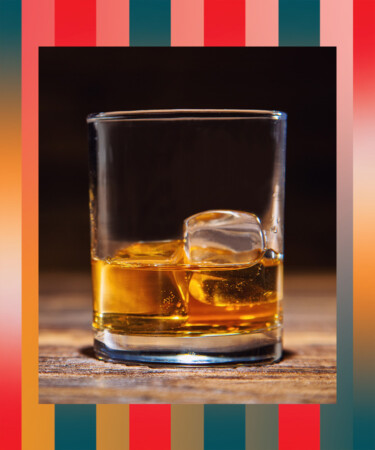Adding water to a neat pour of whiskey can help open up its flavors. Now, scientists say they’ve pinpointed the ideal amount that will awaken those flavors without drowning your drink.
Researchers at Washington State University recently completed a study to find the ideal amount of water to dilute whiskey, according to a university press release. Assistant professor Tom Collins and Oregon State University’s Elizabeth Tomasino led the study, which analyzed the chemical makeup of 25 whiskeys when combined with water. The study included bourbon, rye, and Irish whiskey, as well as single malt and blended Scotch.
A sensory panel evaluated six whiskeys (three Scotch and three bourbons) in a varying amount of dilution. When poured straight from the bottle, the participants could easily tell the differences between the six whiskey samples. At a dilution ratio of higher than 80:20 whiskey to water, however, the panelist found that the samples’ aromas were all strikingly similar. While the participants reported that the Scotches (both blended and single malt) smelled similar, these spirits remained easily distinguishable from American bourbon and rye.
“This happens because of the way dilution affects what’s in the headspace,” Collins says. “The compounds that are associated with smoky aromas dissipate, and they were replaced by compounds that are associated with fruity aromas.”
A chemical analysis confirmed that water pushes hydrophobic compounds into the air above the liquid, thus affecting the aroma. With higher dilution levels, the smokiness and peat aromas of Scotch turned towards a more fruit-forward aroma. American whiskeys, on the other hand, gained aromas of corn and grains rather than the intended vanilla and oak when too much water was added. This data led researchers to decide that the ratio of 20 percent water to 80 percent whiskey is the ideal mix to adequately open up those aromas without changing the character.
The researchers also note that serving whiskey with a single large ice cube can reach the ideal level of dilution.
“This study helps [us] to understand why those large, square ice cubes have become so popular, because you can actually enjoy the whisky before it gets diluted to the point that it’s not the same whisky,” Collins says.
Co-authors Aubrey DuBois, P. Layton Ashmore, and James Harbertson joined Collins and Tomasino on this study. The research group is also currently studying the chemical makeup of Scotch whisky’s smoky aroma, and plan to present their findings at the Worldwide Distilled Spirits Conference this week.
